
Nevada rancher Cliven Bundy and two of his sons — key figures in a growing movement against the federal government's control of vast public land in the West — will face charges in federal court in a highly-anticipated trial over a 2014 armed standoff with federal officers.
Three years after the Bundys and hundreds of their supporters faced off with federal agents in Bunkerville, Nevada, propelling the family into the national spotlight, they now face charges of conspiracy to commit offenses against the US, impeding or injuring a federal officer, threatening federal officials, and multiple weapons charges.
The four men standing trial in Las Vegas are Cliven Bundy, his two sons Ammon and Ryan, and longtime supporter Ryan Payne. The four are key figures in two separate armed standoffs that have helped embolden an anti-federal government movement in the US.
Opening statements were scheduled to be heard Nov. 7, but were postponed to Nov. 14 while the judge considers multiple motions including how to handle surveillance video of the Bundy's home, and whether the defendants will continue to be held in custody during the trial.
Cliven Bundy
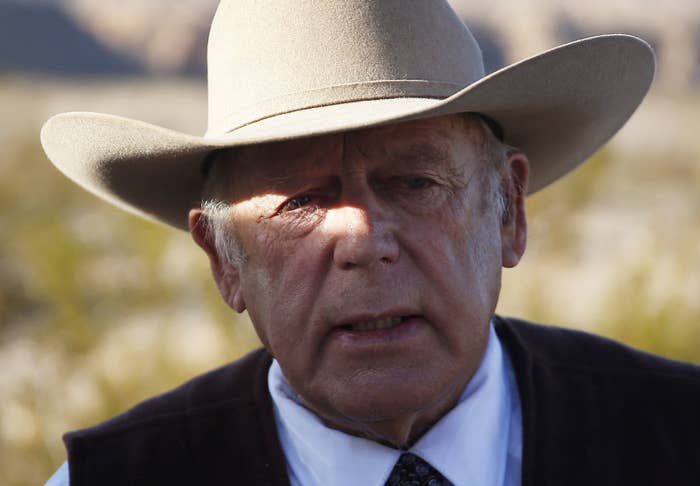
Many of the Bundys supporters, including President Trump's longtime associate Roger Stone, believe they are political prisoners of an overreaching government and have called for their release. Others see the family and their actions as the spark for a growing militia and anti-government movement eager for confrontation with federal officials.
When the Bundys rallied hundreds of armed civilians to their side during the 2014 Nevada standoff, federal agents were forced to retreat, emboldening the Bundy sons and a network of militias. Two years later, Ryan and Ammon Bundy led a 41-day armed occupation in Oregon. A jury later acquitted the men of all charges.
"Are they scofflaws?," asked Ryan Lenz, who monitors anti-government groups for the Southern Poverty Law Center. "Or in this political environment, are they heroes?"
As the case heads to trial, here's what you need to know about the Bundys and their ongoing fight with the federal government:
Bundy's original feud
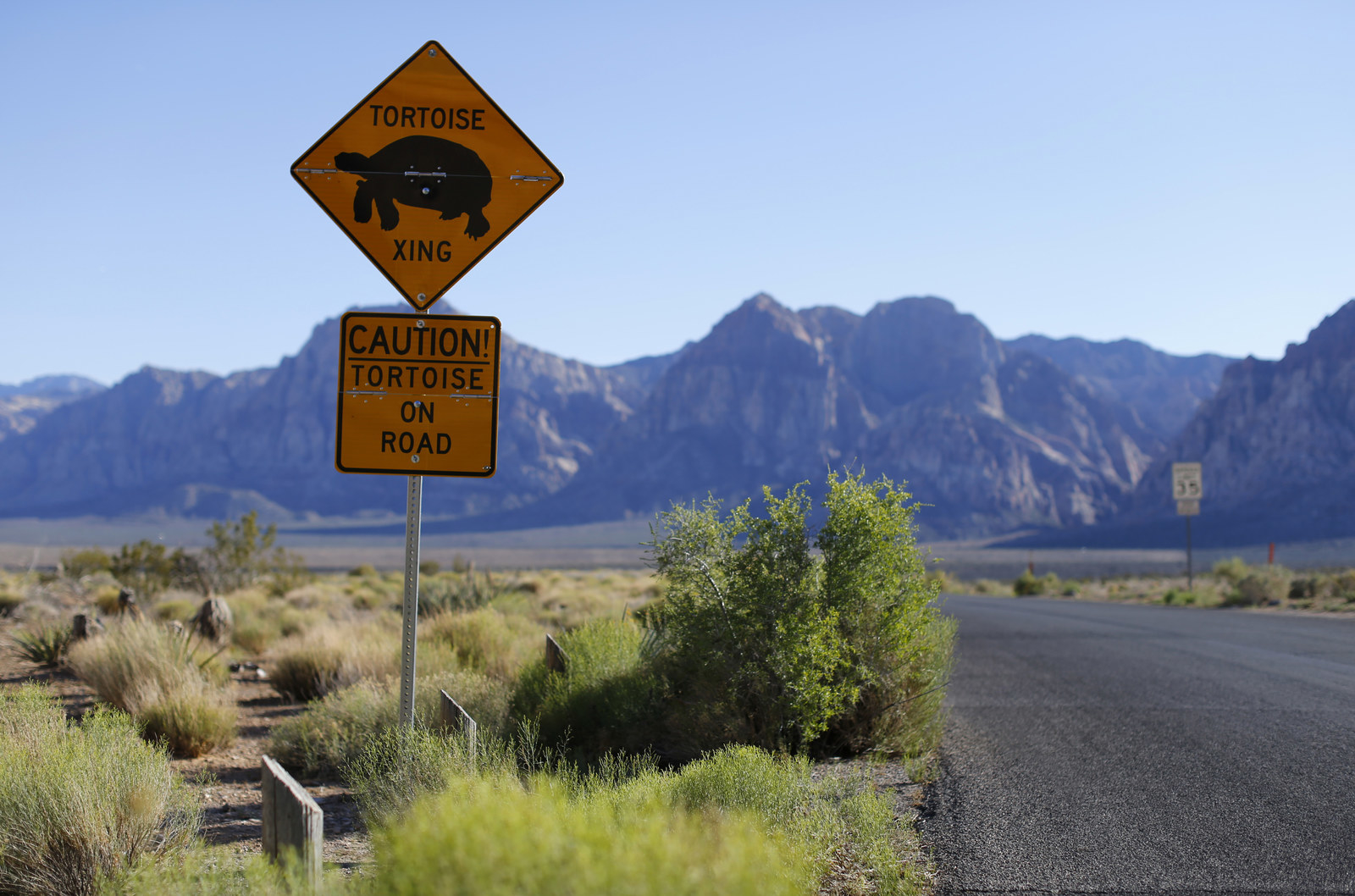
The Bundys ancestors settled in Southeastern Nevada in the late 1800s and the family has been ranching there ever since. In 1989, the US Fish and Wildlife Service listed the desert tortoise as an endangered species, prompting the Bureau of Land Management to designate hundreds of thousands of acres near Bundy's ranch to protect the tortoise.
The bureau purchased grazing rights from ranchers affected by the plan, effectively giving the BLM the authority to manage and regulate use of the land, including grazing, through permits.
Ammon Bundy

Cliven Bundy, instead, braced for a fight.
Grazing fees have long been a contentious topic between ranchers and federal regulators, but Bundy took a hard stance and refused to sell his rights or pay the fees. Over the years, his continual use of the land for grazing built up to more than $1 million in fees.
Bundy argued his family had been using the land for generations and he and other ranchers accused the federal government of a "land grab."
Tensions in Nevada increased.
2014 standoff in Bunkerville

In Aug. 2013, a court ordered Bundy to remove his cattle from public lands and in October agents began to seize his cattle that had trespassed on federal land.
The following April, dozens of supporters headed to Bundy's ranch as officials began to round up the family's cattle. Protesters began to clash with federal agents in heated exchanges and Bundy's son Ammon was hit with a taser after kicking a dog.
The exchange was captured on video and the protest in the remote Nevada desert began to attract nationwide attention, particularly from conservative media and armed militia groups that flocked to the ranch.
Militia groups like the Three Percenters and Oathkeepers rallied supporters on social media to head to Bunkerville to protect the Bundys and their ranch, depicting the confrontation as an armed stance against an abusive federal government.
The growing protest drew not only supporters of ranchers angry over the federal government's control of vast public lands in the West, but anti-government and militia groups.
Ryan Payne

Some, armed with rifles, took positions on freeway overpasses and aimed their weapons in the direction of federal agents.
Ryan Payne, an Army veteran and electrician from Montana, told reporters at the time he helped organize armed supporters into sniper positions against authorities.
"If they made one wrong move, every single BLM agent in the camp would've died," Payne told the Missoula Independent.
On April 12, 2014, the BLM decided not to enforce the court order and, in video recorded and shared widely on social media, federal agents were seen retreating from hundreds of protesters, many of them on horseback and wearing cowboy hats. Ammon Bundy proclaimed, "We won the battle!"
2016 Oregon standoff
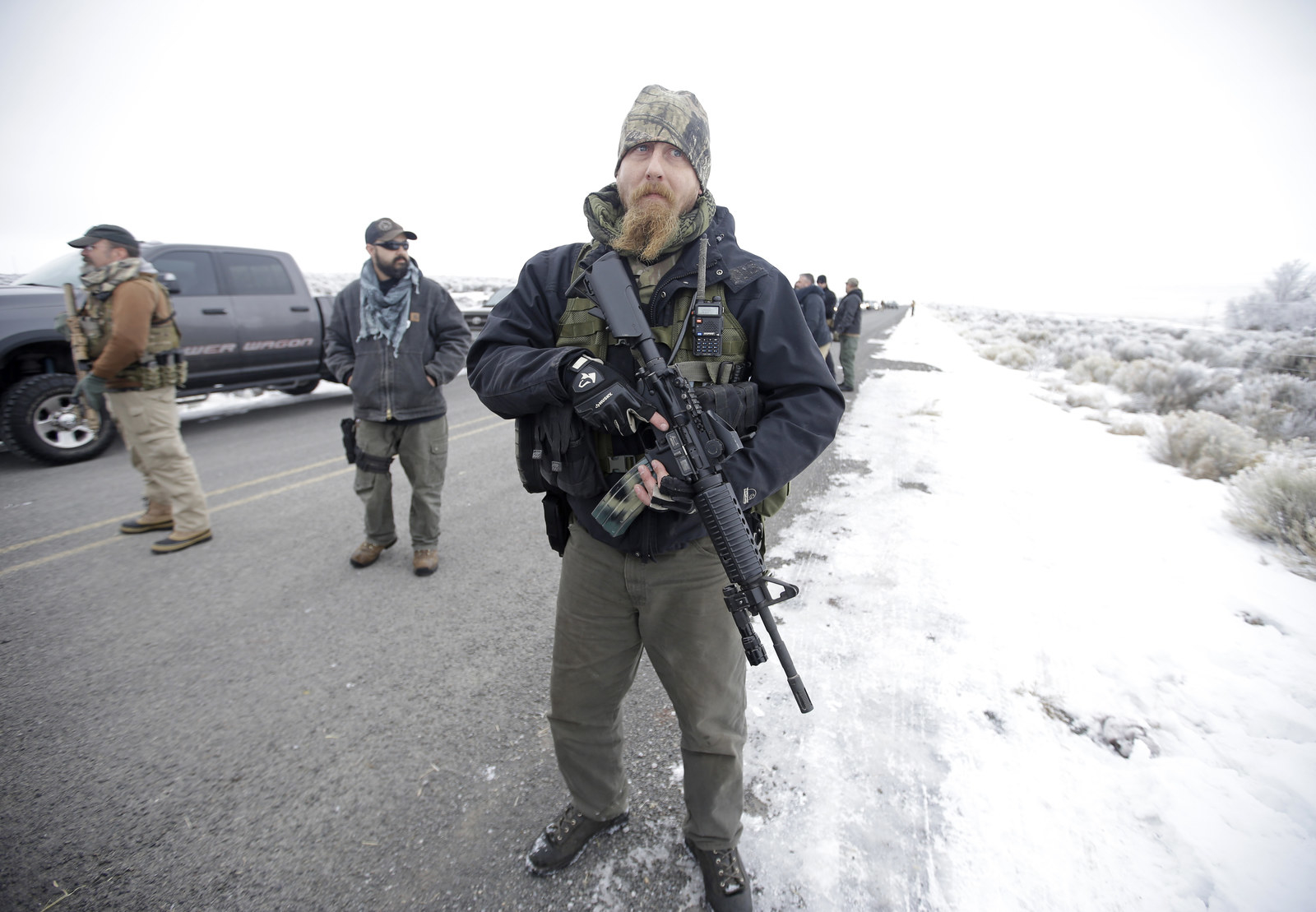
The BLM's retreat, and the lack of arrests and prosecutions from the Nevada standoff emboldened Bundy and his supporters, not only with regard to their ideology but on their tactics against federal authorities.
In late 2015, Ammon Bundy and his brother Ryan traveled to rural Harney County, Oregon, where another ranching family was facing their own confrontation against the federal government. Dwight Hammond Jr. and his son were sentenced to five years in prison for starting a fire on their own property that spread to federal land. The two argued the burn was to stop an invasive species.
Ryan Bundy
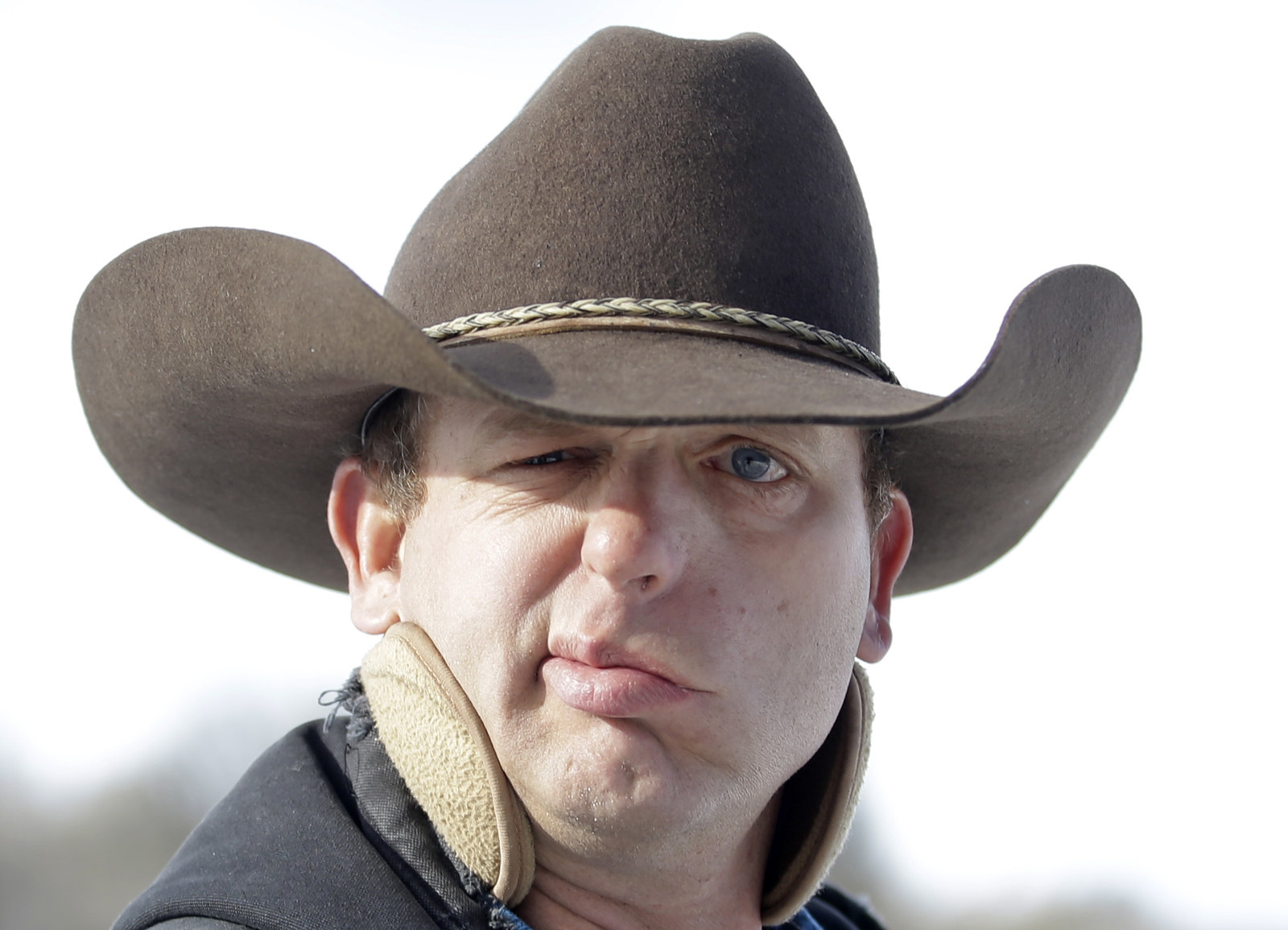
The Bundy and their supporters, including militia groups that aided the standoff in Nevada, headed to Oregon. After a march through the small town protesting the Hammond's case, Bundy urged supporters to head to the 187,000-acre Malheur National Wildlife Refuge and take over the compound.
For the Bundys, who are Mormon, religion has played a central role in their justification for action against the government, using the Bible and pocket US Constitutions to back their actions.
The standoff lasted 41 days and ended with the arrest of Cliven, Ammon, and Ryan Bundy. During the arrests, officers shot and killed Robert "LaVoy" Finicum, who was close with the Bundys and acted as a spokesman for the group.
The prosecutions and trials
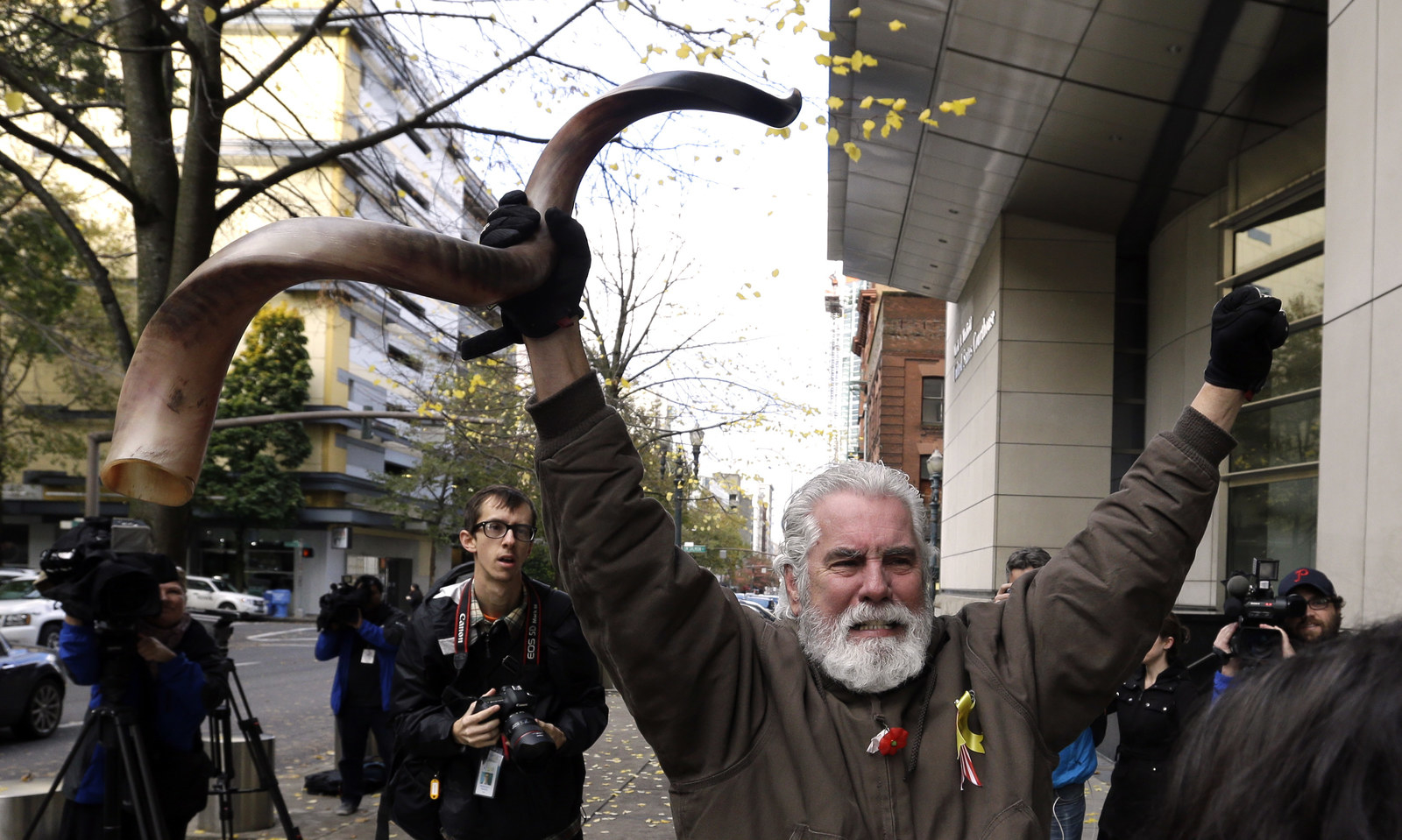
Federal prosecutors charged the leaders of the two occupations around the same time in early 2016. The defendants in the Oregon standoff went to trial first.
In a verdict that stunned observers, the leaders of the Oregon occupation, including Ammon and Ryan Bundy, were found not guilty of federal charges of conspiracy to impede officers and encouraging militia members to flock to the region.
Some of those involved in the standoff pleaded guilty to lesser charges in deals that some viewed as more beneficial to the defendants than prosecutors.
Experts monitoring domestic extremist groups, including militias and anti-government groups, see the trial in Nevada as the last chance for federal prosecutors to convict the Bundys and their supporters.
What to expect
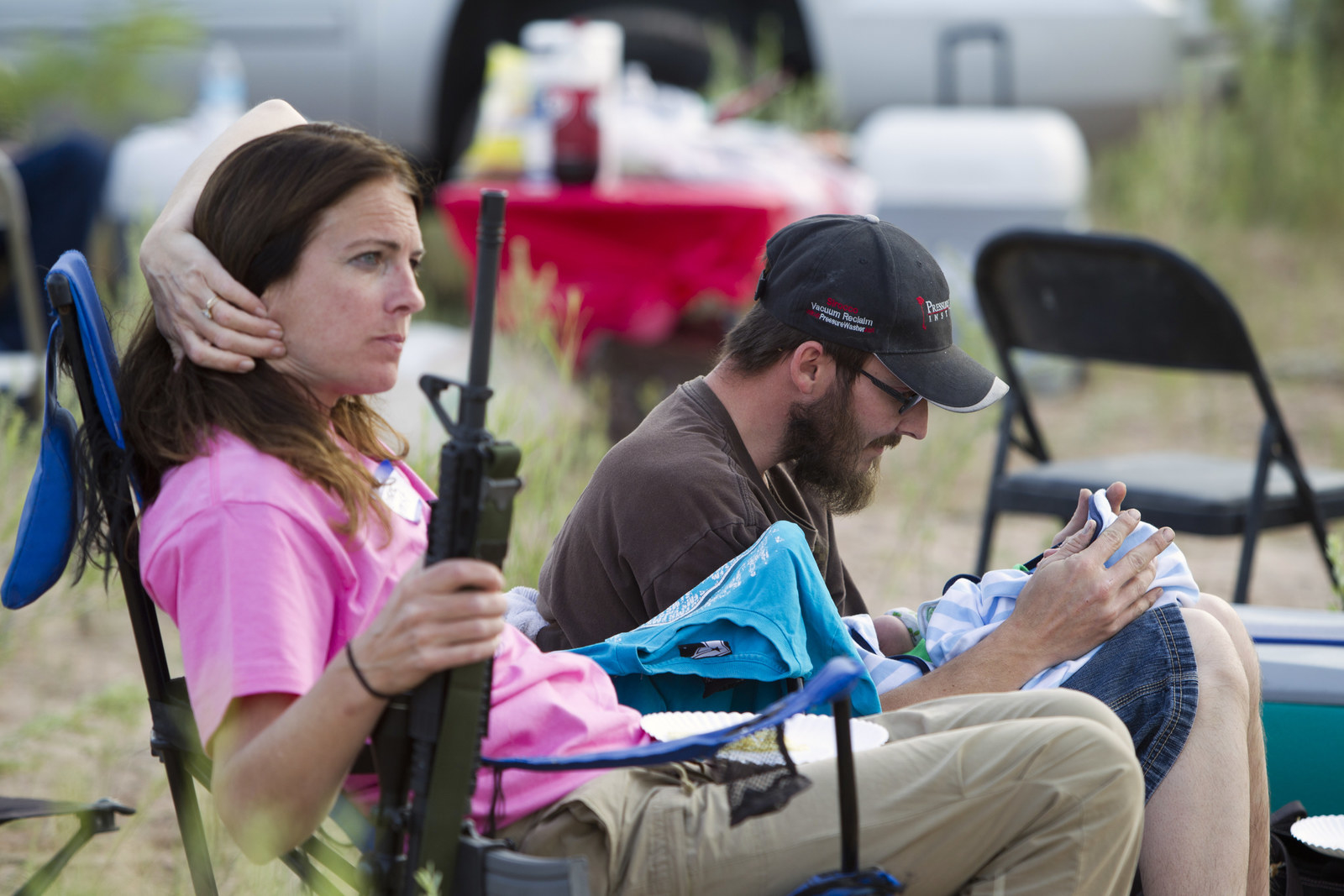
For the four defendants, the Las Vegas trial is an extension of their original protest against the feds — yet another forum to highlight what they allege is government abuse and overreach. Some of the motions, statements, and actions that take place in the courtroom will likely be aimed at making political statements, experts say, rather than to aid in their own defense.
The judge presiding in the case, Gloria Navarro, has already held defendants in contempt, and shown little patience for events in the courtroom that are outside procedure. These incidents, some expect, might be fewer than what was witnessed during the Oregon trials.
Nevertheless, the defense is expected to make the argument that the confrontation with federal agents in 2014 was not a standoff at all, but a protest against the government.
Prosecutors, according to court documents, will attempt to prove that federal agents were afraid of the armed civilian protesters, and that the Bundys worked to orchestrate the standoff.
Like the case in Oregon, the defendants are expected to argue that they were armed during the confrontation solely for their protection and did not pose a threat to federal officials.
So what's at stake?

"This is the last opportunity the Justice Department has," Mark Pitcavage, senior research fellow and an expert on right-wing extremism for the Anti-Defamation League told BuzzFeed News. "If they are acquitted, or there is a mistrial, or if they get off, what extent will this embolden extremists?"
A lack of charges filed immediately after the 2014 standoff, and potential for acquittals in both Oregon and Nevada standoffs, would serve to significantly embolden and, in the eyes of anti-government groups, justify their actions, Pitcavage said.
A conviction, on the other hand, also has the potential to effectively turn the Bundys into martyrs for a movement that has already grown significantly, and spark outrage among sympathetic groups.
Already, Lenz, at the SPLC said, those who oppose federal control of western lands have gained what they perceive are small wins as President Trump announced plans to review and shrink national monuments created during the Obama administration.
Lenz believes an acquittal would serve to legitimize the beliefs of the groups who have supported the Bundys in the standoffs.
"They will see it as totally legal and justified," he told BuzzFeed News. "In a sense, I think it's already gone mainstream."
The trial, with both protesters and supporters already gathered outside the federal courthouse, will be widely watched by those who have followed the Bundys' conflict with the government.
And no matter what the verdict, the fight will undoubtedly continue.
"This standoff was 20 years in the making," Lenz said. "This is just the latest chapter."

